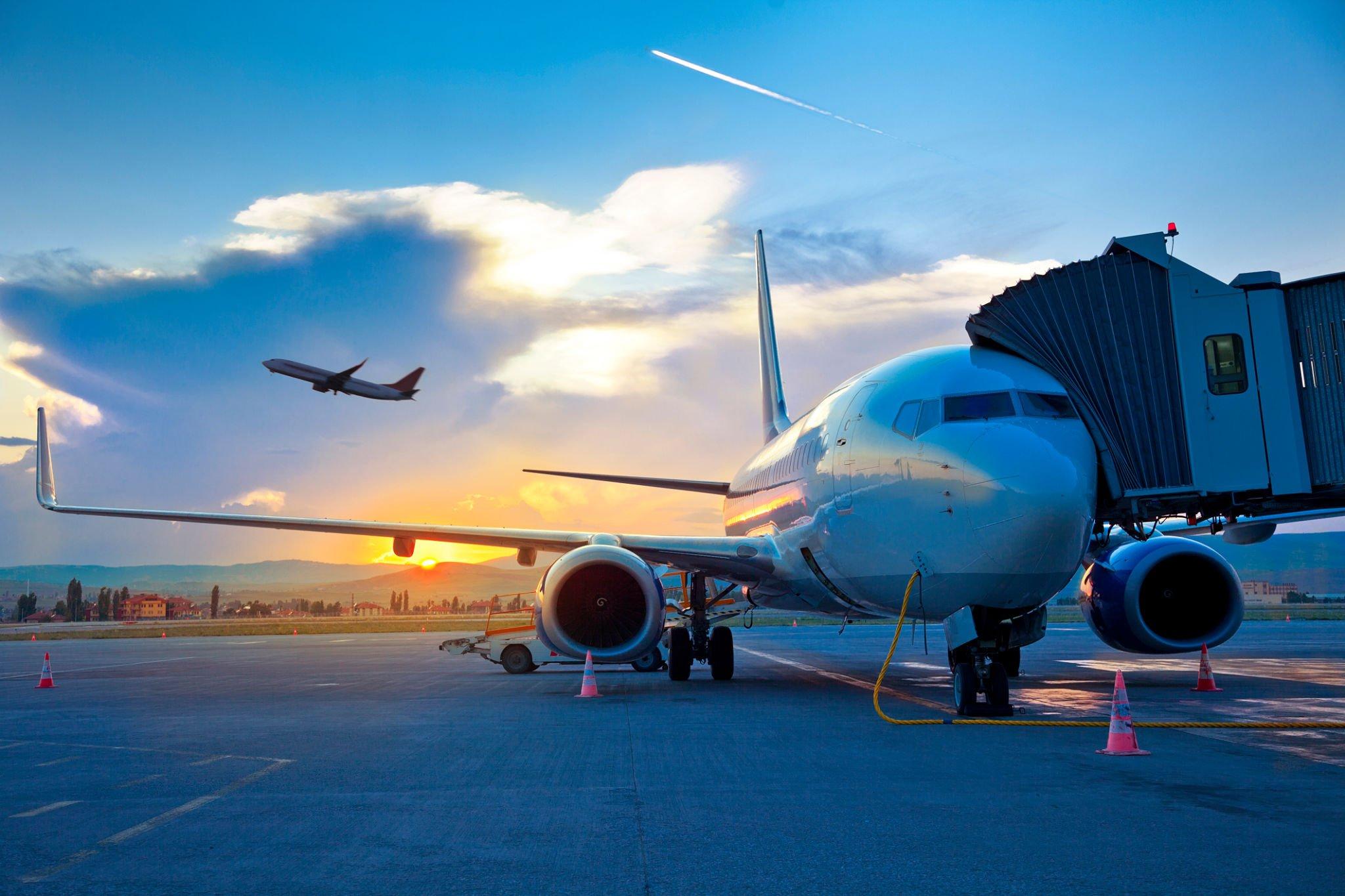
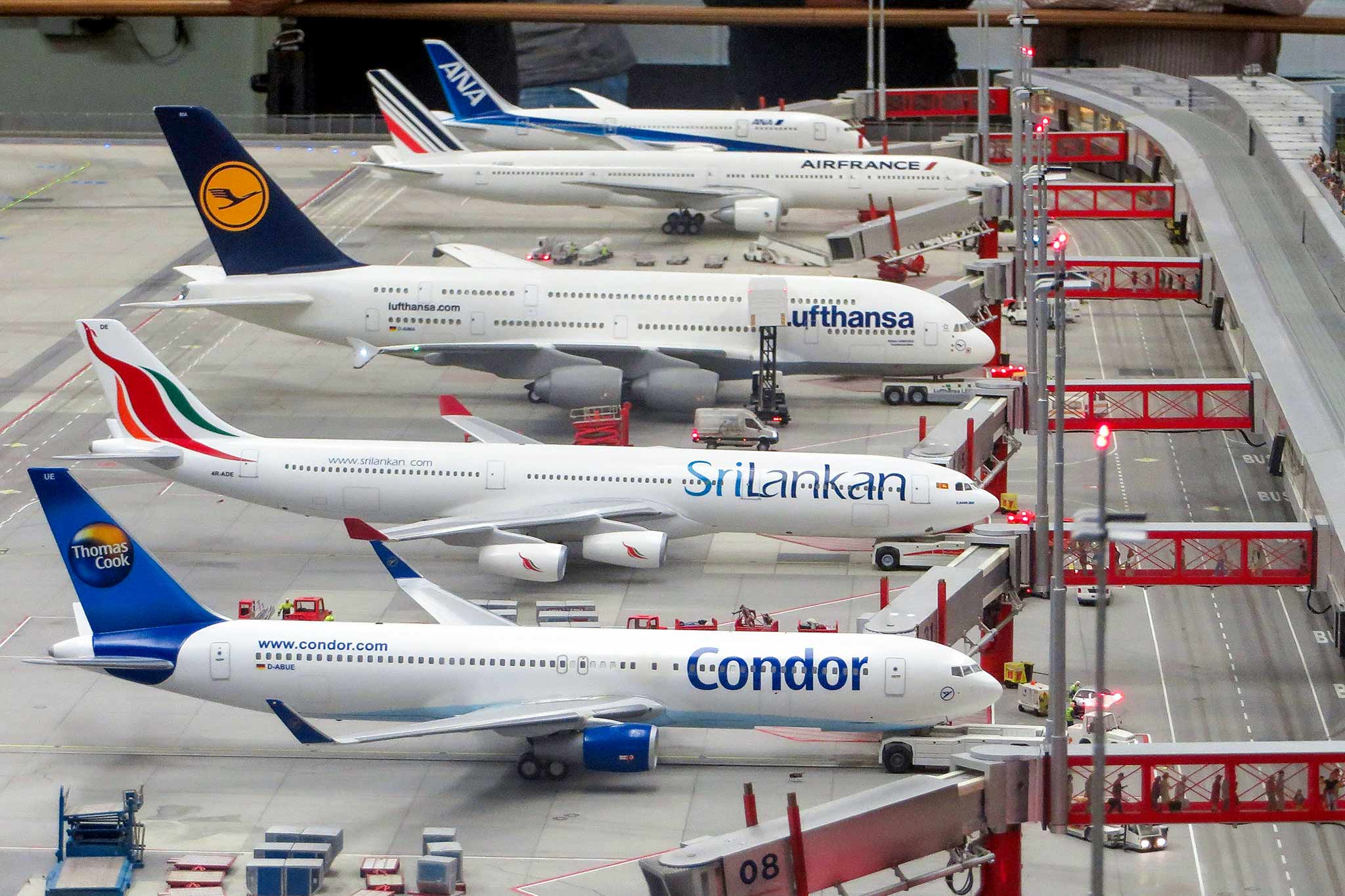
It is extremely rare these days to hear news about fatal commercial aviation accidents. Despite zero fatal accidents in 2023 compared to twelve in 1980, the yearly number of flights has more than quadrupled.
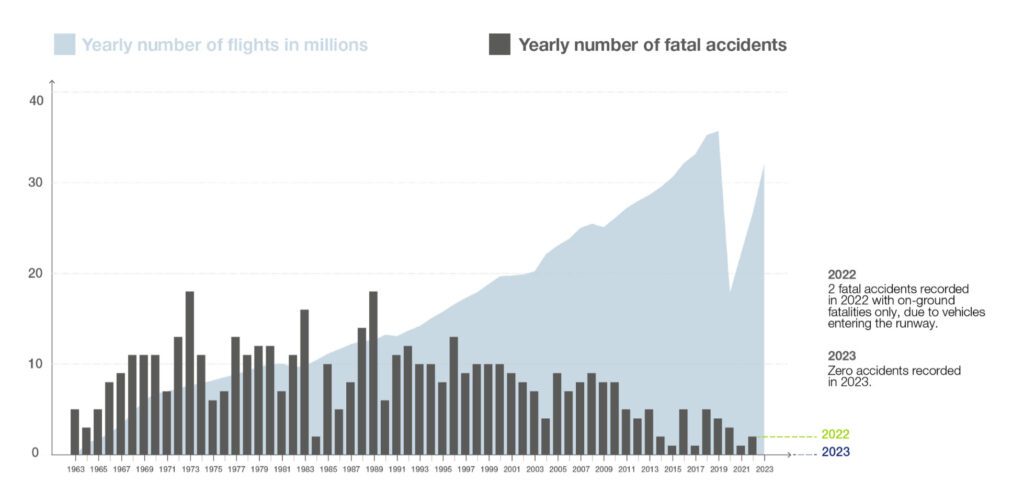
Source: airbus.com
Many aviation enthusiasts are familiar with documentaries that analyze aviation accidents, revealing various factors that align to produce an unfortunate outcome. The narrative emphasizes the investigation process, the collection of evidence, and ultimately presenting the conclusion along with the lessons learned. Aviation distinguishes itself as an industry that incorporates the learned lessons into the aircraft design, crew training, maintenance procedures, tools, technology, and more, showing an impressive record of constant improvement. The so-called “black boxes” are a key contributor to the success because of their ability to provide insightful data.
The objective is clear: to learn so that we don’t repeat the same mistakes. The method remains effective, at least while in the air.
Despite safety being pivotal in airport ramp operations, the intricate nature of ground operations frequently leads to avoidable accidents. According to the Flight Safety Foundation, 27,000 airport ramp accidents and incidents occur every year across the globe, or one per 1,000 departures. Ramp accidents translate into about $10 billion in costs every year for airlines.
What’s Happening on the Ground?
The latest IATA ground safety report indicates that 82% of the accidents on the ground occur while the aircraft is approaching the stand or while parked. The parts of the aircraft that suffer the highest percentage of damage are the cargo doors, cargo access compartments, engine nacelles, passenger doors, and wing tips.
Critical factors affecting airport ground safety include:
- Significant decline in experienced ground personnel.
- High turnover and shortage of talent (inexperience, lack of coverage, and fatigue)
- Congested ramps due to record-level operations
- Limited adoption of technology and equipment automation to address the above issues.
- Distraction due to overstimulation from smartphones and other devices impacting focus.
- A shortage of pilots is expediting career advancements from small aircraft to larger jets, resulting in newly trained pilots entering congested and frequently chaotic apron areas.
In aviation, the Swiss cheese model serves as a conceptual framework to understand how accidents unfold when multiple factors align. It visualizes the layers of defense within a system as slices of Swiss cheese, with each layer having potential weaknesses represented by “holes.” When these holes align across different layers due to various factors such as human errors, technical failures, organizational shortcomings, or environmental conditions, it creates a pathway for accidents to occur. This model underscores the need for comprehensive risk management strategies that address and mitigate all potential vulnerabilities across different layers of the system. By recognizing and proactively addressing these vulnerabilities, aviation professionals can strengthen safety measures and reduce the likelihood of accidents.
Recent aviation accidents, such as the Norwegian aircraft crash in Oslo, JetBlue’s wing clipping at BOS, and collisions at ORD and LAX, along with an airline worker being ingested by an aircraft engine in Alabama, underscore the Swiss cheese model’s relevance in understanding how accidents occur when multiple factors align on airport ramps. The concerning trend in ground accidents prompted the FAA to issue a SAFO in 2023, urging operators to reassess their towing and marshalling procedures to enforce safety measures.
Despite advancements in safety protocols, a significant number of ground incidents persist due to failures in following established procedures, rushing, lack of attention, fatigue, and complacency. In essence, human error remains the primary cause of accidents and incidents on the ground causing often fatal injuries and property damage.
Today, insights into the timing and locations of these occurrences are available, along with an understanding of their primary causes, the associated losses and damages, and how frequently they take place. With all of this information at our disposal, why haven’t we seen an improvement in ground safety statistics?
Unlike in the air, ground operations have yet to adopt the principles that make the system work consistently and thus the virtuous circle is frequently broken. Recent accidents show evidence of repeated errors, inadequately documented reports, lack of technological tools to aid ground incident investigations, etc. Ground crews undergo continual training due to high turnover, while most ground equipment lacks technological sophistication or deterrents to mitigate common errors.
Where Do We Go From Here?
Most safety investigations are labor intensive requiring manual research, personnel interviews and recount of events; the elaboration of statements, collection of pictures or CCTV stills (often of poor quality), and filling of forms is all manual and time consuming. One can easily conclude that there is plenty of room for error and misinterpretation within this practice.
Today we have what it takes to reverse the trend. AI technology can alert in real time when critical safety procedures are not followed or there are deviations from safety protocols. The number of notifications triggered can help to identify trends and patterns that are critical to prevent future occurrences. Just like the “black boxes” on the aircraft, the AI is a ground data recorder or “black box” which constantly captures visual evidence and logs timestamps. This serves as a priceless learning tool for positive training, behavior reinforcement, crew recognition, and root cause analysis. Today we have what it takes to avoid repeating the same mistakes.
Sample Jet Bridge Out of Range Alert
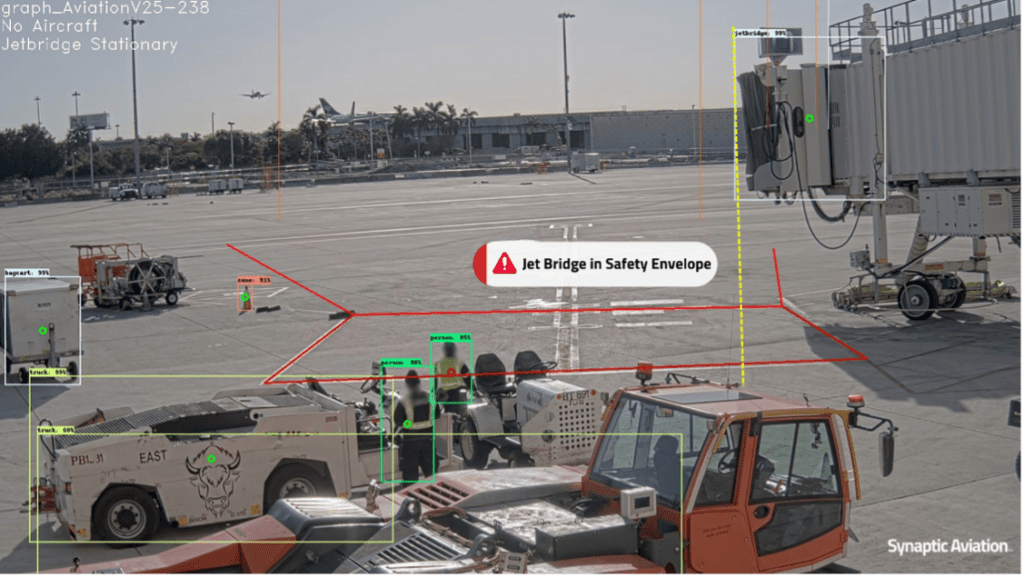
Sample safety envelope Obstacle Alert
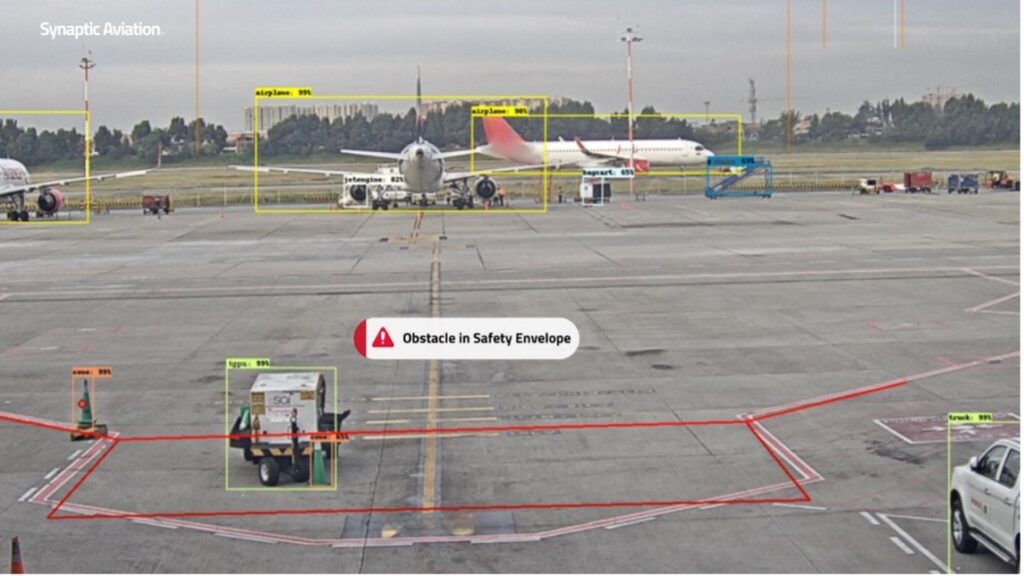
Sample Pre-Arrival FOD Walk Completion
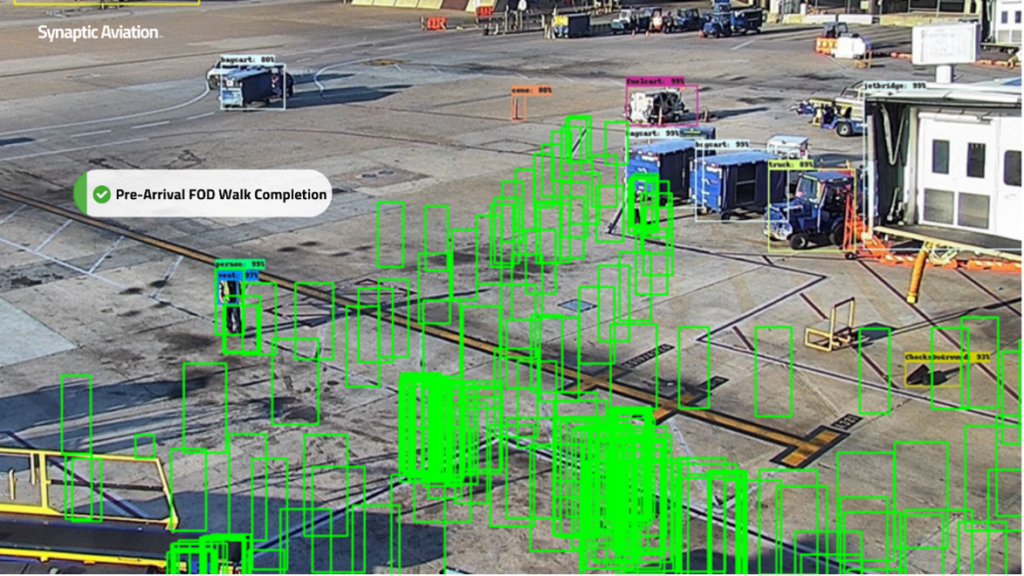
Synaptic Aviation’s Computer Vision technology is here to help.
Interested in learning how Synaptic Aviation can help you and your team stay safe on the apron? Request a demo at synapticaviation.com
The Latest in AI-driven Aviation Technology
Subscribe to Synaptic Aviation’s newsletter for exclusive insights and updates.


Synaptic Aviation Selected to Showcase Pioneering AI Technologies at Central Florida Tech Grove
Synaptic Aviation, a U.S.-based technology company specializing in artificial intelligence (AI) solutions for the aviation industry, is honored to announce its selection to participate in the prestigious SBIR Partnership Day at Central Florida Tech Grove.
By Synaptic Aviation June 10, 2024
